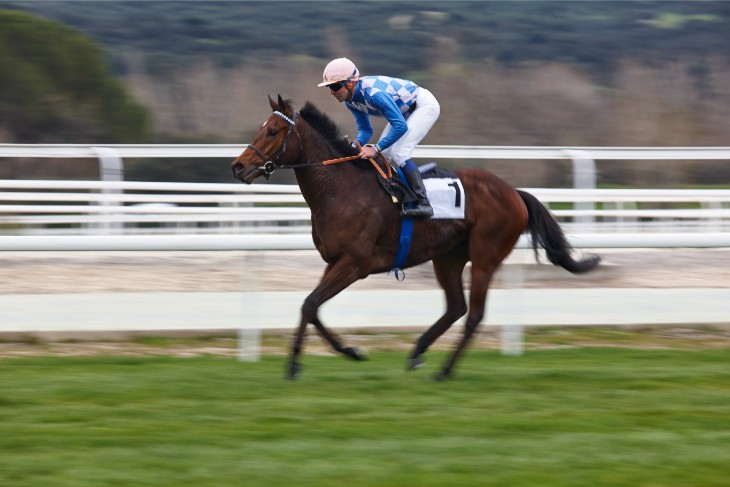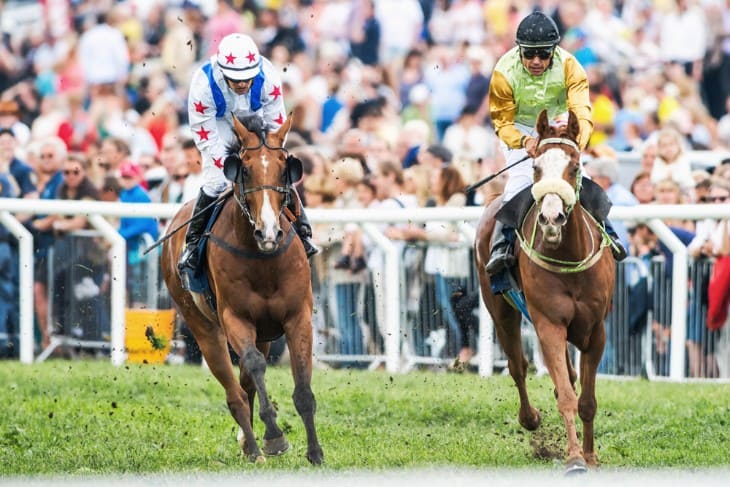- The Allure of Horse Racing Betting
- Key Concepts for Novices
- Bet Types - Assessing Your Options
- Factoring in Pace Dynamics
- Mastering the Magnificent Racecards
- Evaluating Odds and Calculating Returns
- Betting Strategies for Beginners
- Choosing Win Contenders Wisely
- Understanding Track Biases
- Managing Your Money Wisely
- Conclusion
Horse racing is an exhilarating sport that has enthralled enthusiasts for generations. At the heart of its allure lies the opportunity to place wagers on the outcomes of races. By understanding the fundamentals of horse race betting, even beginners can appreciate the excitement and strategize their way to rewarding experiences at the track.
The Allure of Horse Racing Betting
Horse racing brings together multiple dimensions - the synergy between jockeys and horses, the expertise of trainers, and the eager anticipation of spectators. Betting inserts an extra layer of viewer engagement by allowing people to gain a personal stake in particular race outcomes. Whether a passionate racing fan or casual observer, placing thoughtful wagers can magnify the thrill of watching majestic equine athletes thunder around the oval.
The betting component of horse racing has a rich and storied history. Many of the wager types commonly used today have origins tracing back hundreds of years. The core appeal remains the chance to demonstrate one's skill in analysing information, calculating risks, and ultimately predicting performance. There is also an element of fortune, as even the most favoured entrants can be waylaid by sudden injuries or unpredictable events in the running. This blend of analytic proficiency and sheer luck is integral to horse racing's enduring popularity.
Key Concepts for Novices
Those new to equestrian sports betting should focus first on grasping fundamentals. This includes:
- Learning the various bet type options
- Understanding how odds work and payouts are determined
- Studying race day programs (racecards) packed with useful data
- Developing betting strategies aligned with your risk tolerance
Additional pointers:
- Start by placing basic win/place bets as you learn
- Set a clear budget for your wagering bankroll
- Resist the temptation to chase losses with impatient bets
- Watch races closely to start recognizing strategic patterns
By mastering essential knowledge areas and establishing responsible betting habits, fledgling punters can set themselves up for growth as informed horseplayers.
Bet Types - Assessing Your Options
Numerous bet types exist, ranging from straightforward picks to complex combinations requiring accuracy. As a beginner, sticking with basic wagers is advisable while evaluating your risk appetite.
The simplest option is choosing a single horse to finish 1st (win), 2nd (place), or 3rd (show). Winning bets yield higher potential profits but relatively lower chances. Place/show wagers see improved odds of successful picks but smaller payouts. There are also popular hybrid bets like "each way" covering 1st and 2nd.
For those seeking bigger thrills, exotic bets invite punters to predict finish orders for multiple horses. Exactas require properly guessing the top two in sequence. Quinellas allow the top two in either order. Trifectas involve accurately naming the podium in perfect order. Risk escalates moving to Trifectas and Superfectas (top four in perfect sequence). But so do potential profits.
Additional pointers:
- Weigh payoff potential vs accuracy probability with each bet type
- Early on test preferences using small stakes across options
- Capitalise when you identify optimal bet types aligning with your strengths as a handicapper
- Keep tabs on how your betting priorities evolve over time and changing skill levels

Factoring in Pace Dynamics
One key element for handicappers to assess is the projected pace shape of a race and how it could impact the chances of different running styles. Some horses excel at wire-to-wire speeds while others close best. How the early pace scenario develops is critical.
Front-runners want a race with minimal early challenges so they can relax on the lead. Closers hope for blistering fractions that create stamina concerns late. There are also pressing types who apply pressure without pure speed, compounding challenges for true pacesetters. Handicappers must envision how the early race fractions could realistically play out based on each horse's typical tactics.
This involves deciphering how much early speed is actually entered. Is there only one dedicated pacesetter likely to set moderate splits unthreatened? Or are there multiple front-runners that could get drawn into a speed duel driving fractions too fast? Also important is considering if runners with pressing tendencies will apply heat to the leaders. Horses won't necessarily employ their typical tactics if faced with an abnormal pace context.
Being able to predict whether the early fractions will be exceptionally fast or slow is a huge advantage. You can upgrade closers if you expect hot fractions to impact late running. When a lone speed horse looks likely to get loose on the lead, it merits an extra look for the win. Also avoid horses that appear to prefer sitting off a hot pace if the projected scenario is a slower one. There are many ways pace dynamics impact chances.
Translating your pace shape projections into wagering strategy adjustments is an advanced handicapping skill. But the effort to read early fractions, absorb running styles, and anticipate pace contexts gives you an edge. While speed figures and class ratings are easy starting points, few variables are more crucial than tactical pace analysis. Only by investing the time to envision how races will unfold can you consistently extract maximum value out of your bets.
Mastering the Magnificent Racecards
Race day programs contain valuable data to inform wagering strategy. Information packed into racecards includes:
- Horse names/saddle numbers for easy identification
- Jockey/trainer details conveying experience levels
- Recent finishes demonstrating form and fitness
- Set weights or handicap assignments per entrant
- Early and updated odds reflecting expectations
Digesting details from racecards should guide bet consideration and facilitate comparison. This includes contrasting past performances from one horse to the next while judging potential preparedness.
Additional notes:
- Download digital racecards in advance for easy access anywhere
- Make your own notes recording insights gleaned from the source material
- Enter races with clear expectations - then update opinions as late odds shift
- Cross-check racecard data with other prognosticator perspectives where possible
- Consume commentary grains of salt; the phrasing "on paper" exists for a reason!
Used properly, the magnificent racecards offer a springboard for punters to launch their own informed betting theories.
Evaluating Odds and Calculating Returns
Odds provide critical insights into how bookmakers view a horse’s probability of winning. Represented as fractions, odds also allow players to calculate potential profits if their selections finish in winning positions.
It is useful to compare odds across multiple sportsbooks to identify discrepancies and maximise value. Novices should focus attention on differences in key horses more than long shots. Understanding odds fluctuations related to betting activity trends or late jockey switches also sharpens gambling skill sets.
Additional notes:
- Learn to convert odds fractions into percentage chances to normalise comparisons
- Notice when public sentiment diverges markedly from the professionals’ odds set
- Significant late odds drops may signal inside information worth accounting for
- Resist playing hunches alone; let the calculated profits guide bet sizing
Consistently finding overlays (horses whose chances exceed odds-implied probabilities) is central to long-term betting success.
Betting Strategies for Beginners
Developing an approach tailored to individual risk tolerance and analytic strengths is vital. A few universal tips:
- Handicap races systematically, gathering insights from diverse sources
- Target manageable fields first, avoiding overloaded 20+ horse chaos
- Consider "cold" jockeys/trainers showing striking recent form
- Leverage exotic bets sparingly until grasping nuances and patterns
Additional pointers:
- Vary play amounts depending on confidence levels in analysis
- Remain alert to paddock observations and pre-race behaviour
- Balance patience allowing races to unfold with opportunism to capitalise
- Track results religiously to identify recurring strategic strengths
By codifying their processes into a cohesive methodology, fledgling punters accelerate their development into advanced horseplayers.
Choosing Win Contenders Wisely
Myriad factors influence a horse’s chances, from inherent talent and preparations to tactical pace scenarios and sheer racing luck.
Logical win contender selection starts with form analysis - recent finishes and closing speed insights offer baseline fitness gauges. Just as important is tracking horse-for-course affinity, some runners thrive at specific distances or surface types.
Additional considerations:
- Jockey/trainer combo chemistry producing disproportionate wins
- Watching for noticeable energised pre-race behaviour in paddock
- Gauging how the projected race shape could advantage closers or frontrunners
- Noting key gear additions (blinkers/ tongue ties) signalling intent
While long shots tempt bettors with big scores, favourites win around a third of all races. Siding too often with improbables leads to financial frustration.

Understanding Track Biases
Racecourses often develop tendencies that create “biases” favouring certain running styles. Headwinds may hinder early speed horses, while deep footing can tire late closers. Punters must watch races closely to identify if pronounced biases emerge. Signs include:
- Specific posts winning disproportionately
- Majority of races being won wire-to-wire or from far back
- Jockeys uniformly opting for front-running or off-the-pace rides
It is critical to determine if observed biases are meaningful over several races or merely coincidence. Adjusting opinions to account for valid biases is an important handicapping skill. This includes downgrading horses disadvantaged by biases and upgrading those benefitting.
Additional pointers:
- Be willing to pivot as you monitor for bias shifts during a racecard
- Consider whether biases impact all distances evenly or vary
- Account for biases without overreacting; the best horses can still prevail
Incorporating track biases into your analysis provides an edge when betting. But it requires close observation and quick adaptation.
Managing Your Money Wisely
Even with shrewd handicapping, betting success hinges on smart money management. Novices must learn to balance maximising returns with minimising risk of ruin. Key elements include:
- Establishing a dedicated horse racing bankroll
- Only wagering amounts you can comfortably lose
- Avoiding desperate “chase bets” after losses pile up
It is prudent to scale bet sizes in proportion to edge. Have restraint betting merely lukewarm opinions. Be more aggressive backing strongly supported contenders.
Additional tips:
- Set stop-loss limits and stick to them strictly
- Build bankroll steadily; resist withdrawing winnings prematurely
- Keep detailed records of bets and outcomes to identify leaks
With money management mastery, you stretch your bankroll and survive inevitable bad beats. This longevity lets expertise and edge grow over time.
Conclusion
By learning fundamental betting concepts and developing thoughtful betting strategies, novice punters can thrive in horse racing’s exciting world. Patience, discipline, and skill refinement will ultimately determine outcomes more than sheer luck alone. With abundant resources to sharpen handicapping approaches these days, horse racing glory awaits those eager to put in the work.








